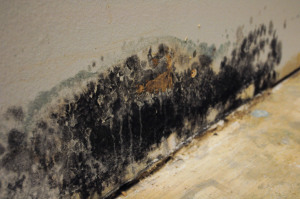 Be proactive and keep indoor humidity low, ideally between 30 and 50 percent relative humidity.
Be proactive and keep indoor humidity low, ideally between 30 and 50 percent relative humidity.
- Measure humidity levels with a humidity meter. This inexpensive device will let you easily check the humidity in your home or office, and is an easy way to prevent mold-inducing conditions.
- If you see moisture on windows, walls or pipes, dry the wet surface immediately. Condensation can be a sign of high humidity.
- Ventilate showers and cooking areas.
- Use a dehumidifier and air conditioner during especially humid months.
Find problem areas and fix them.
You can’t completely mold-proof your home, but you can help to make it mold-resistant. Do a check-in your home and look for the problem areas such as basement flooding, condensation on windows, water stains on the ceiling. A quick fix now to stop mold growth from occurring could save you costly repairs in the future.
Dry excess water and damp areas immediately.
Keep moisture and humidity levels normal with proper ventilation. Mold needs moisture to grow. Keeping your home as dry as possible will help prevent mold growth. Proper ventilation and the use of fans, while cooking dinner or taking a shower, can help keep mold at bay.
Last tips.
Equip your home with mold-resistant materials and products.
- Monitor the humidity indoors.
- Direct water away from your home if rain causes water to seep into your home. Make sure your gutters are clean and your roof doesn’t leak.
- Keep air circulating in your home.
- Keep mold off of indoor plants and pottery.
- Equip your home with mold-resistant materials and products.
